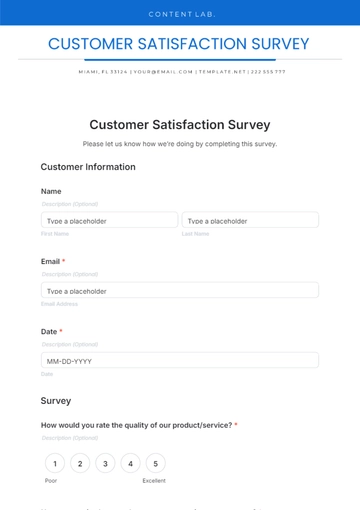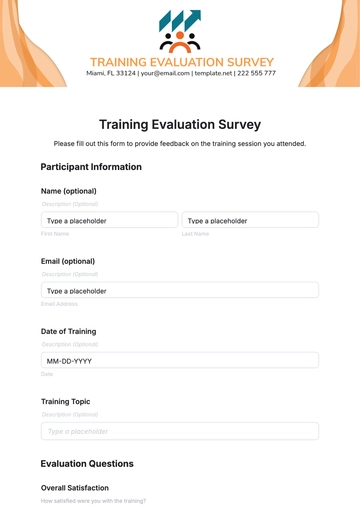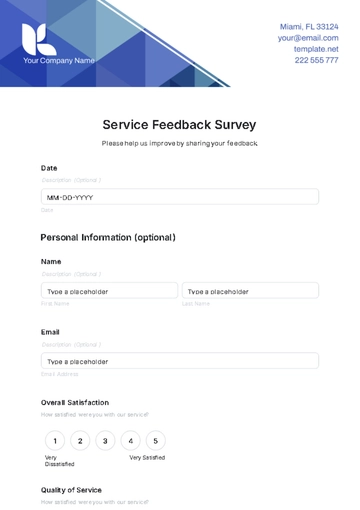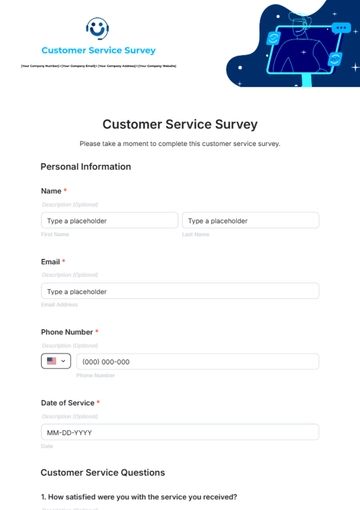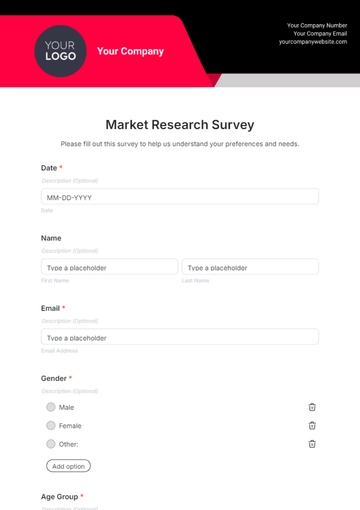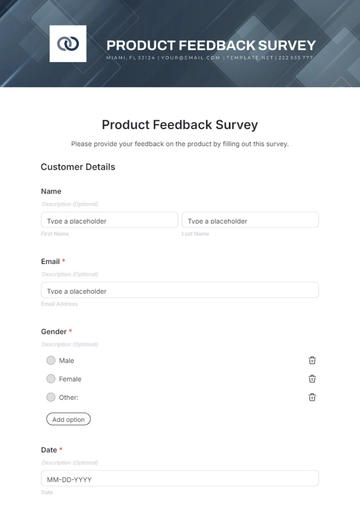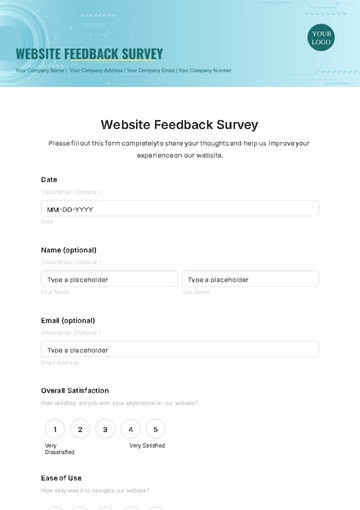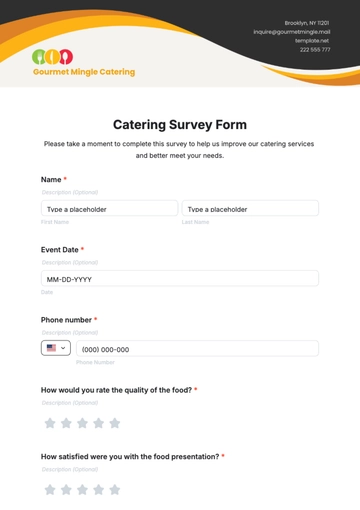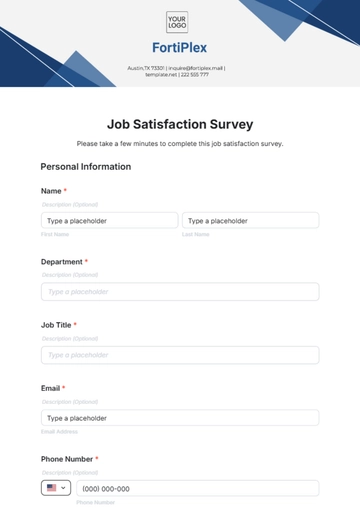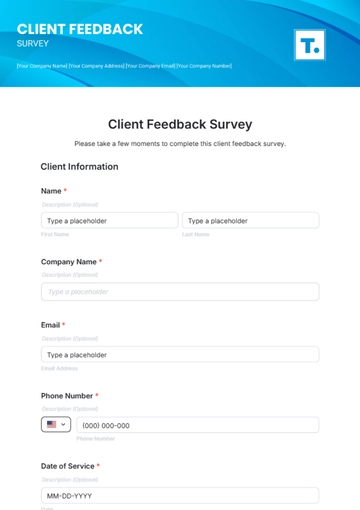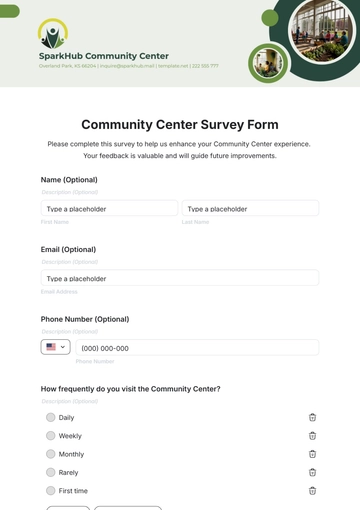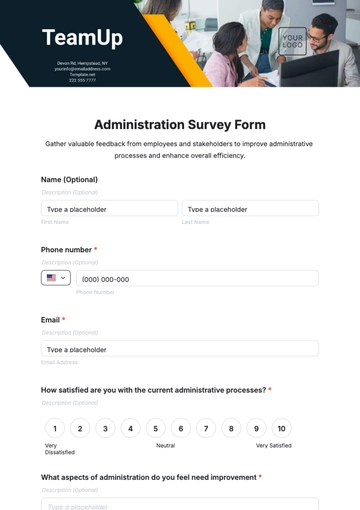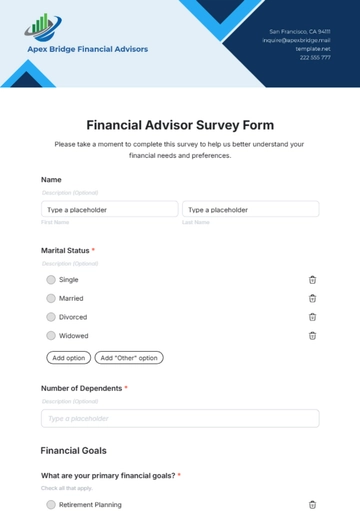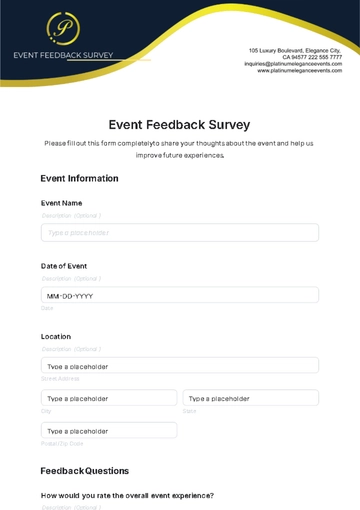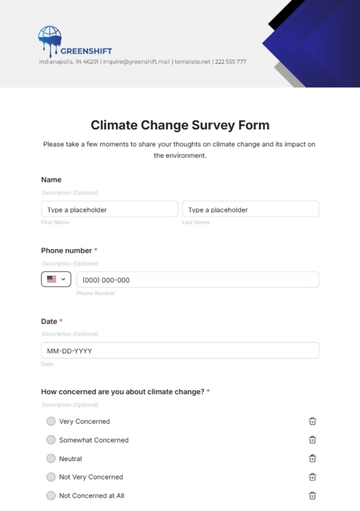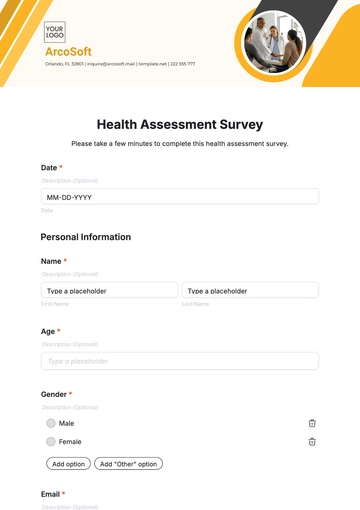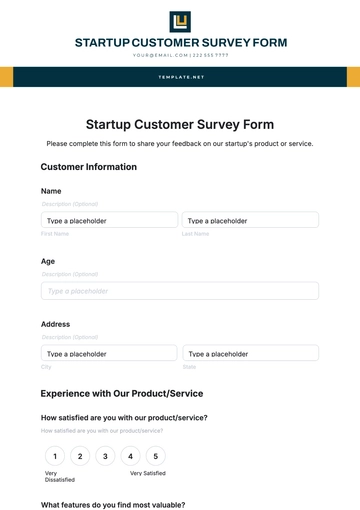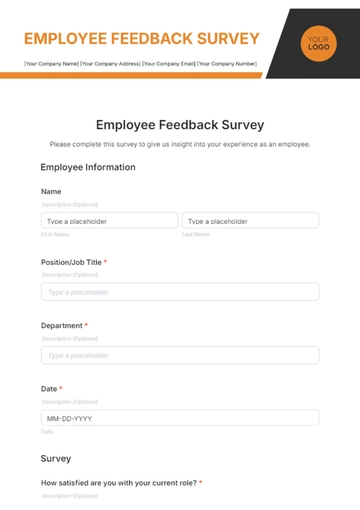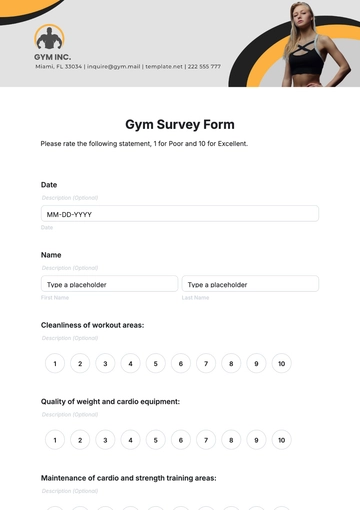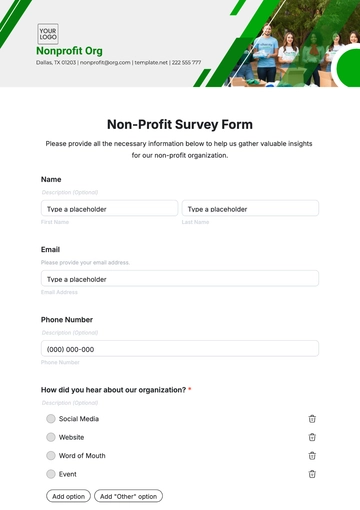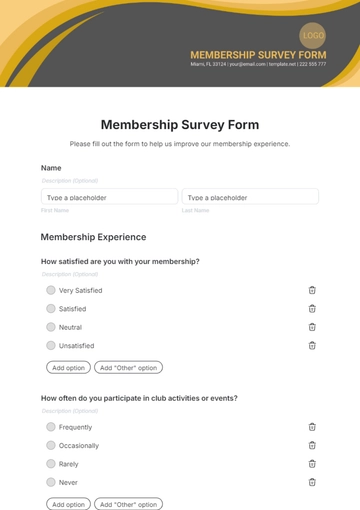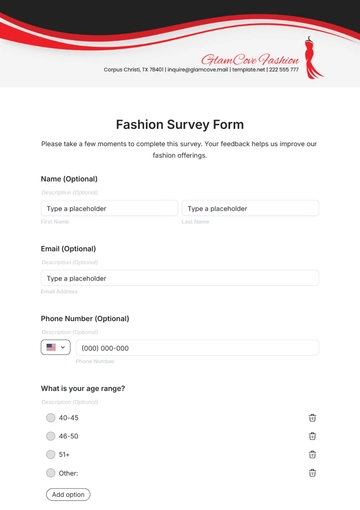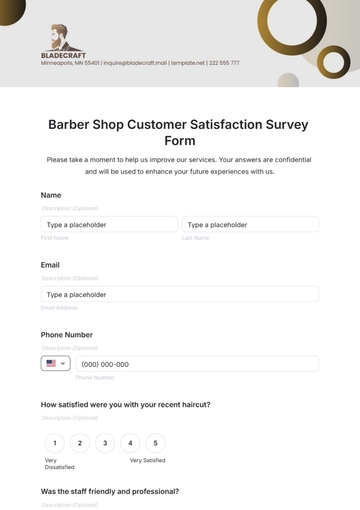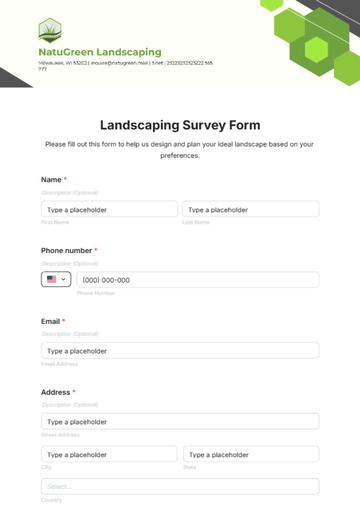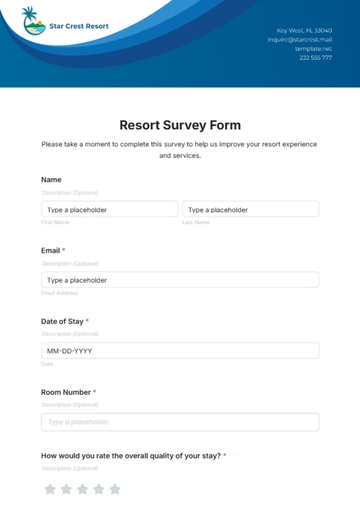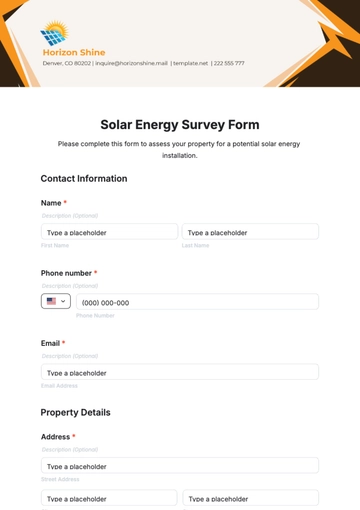Free Safety Compliance Survey

Welcome to [Your Company Name]'s Safety Compliance Survey. Your participation ensures a secure workplace, fostering a culture of safety excellence. Thank you for your commitment.
I. General Information
Company Name: | [Your Company Name] |
Location(s): | [Company Locations] |
Contact Information: | Main Facility: [Main Facility Phone Number] Warehouse: [Warehouse Phone Number] |
II. Regulatory Compliance
A. Are safety policies in compliance with relevant local, state, and federal regulations?
Yes, safety policies are regularly reviewed to ensure alignment with all applicable regulations.
B. Provide documentation of recent regulatory reviews or audits.
See the attached documentation of the latest regulatory audit conducted on [[Month Day, Year].
III. Physical Environment
A. Facility Layout:
Aspect | Compliance Status |
General Layout | Compliant |
Work Areas | Compliant |
Potential Hazards Identified | Mitigation in Progress |
B. Emergency Exits and Evacuation Routes
Are emergency exits marked and unobstructed?
Yes, all emergency exits are marked and regularly inspected.
Is the evacuation plan regularly practiced?
Evacuation drills are conducted semi-annually.
C. Equipment Safety
Are equipment and machinery properly maintained and inspected?
Regular maintenance checks are conducted, and all equipment is inspected quarterly.
Is personal protective equipment (PPE) provided and used appropriately?
PPE is provided, and its usage is strictly enforced.
IV. Procedural Compliance
A. Are safety policies and procedures documented and communicated to employees?
Yes, policies are documented, and regular safety training sessions are conducted for all employees.
B. Are there processes in place for regularly reviewing and updating safety procedures?
A bi-annual review process is in place to update safety procedures as needed.
C. Is there a system for reporting and investigating accidents or near misses?
Yes, an incident reporting system is in place, and investigations are conducted for all incidents.
D. Are corrective actions implemented based on incident investigations?
Corrective actions are implemented promptly following incident investigations.
E. Are employees trained on safety protocols and procedures?
All employees undergo safety training upon onboarding and receive refresher training annually.
F. How is the effectiveness of safety training evaluated?
Training effectiveness is assessed through regular quizzes and feedback sessions.
V. Employee Involvement
A. Is there a mechanism for employees to provide feedback on safety concerns?
An anonymous suggestion box is available, and safety concerns are actively encouraged.
B. Is there a safety committee, and how often does it meet?
Yes, a safety committee meets monthly to discuss safety initiatives and address concerns.
C. What initiatives has the safety committee implemented recently?
The committee recently implemented a "Safety Awareness Campaign" across all departments.
VI. Documentation and Recordkeeping
A. Are safety records, inspections, and incident reports well-documented?
Yes, all safety-related documentation is maintained and regularly audited.
B. How are records maintained, and for how long are they retained?
Records are kept electronically and in hard copy. The retention period complies with regulatory requirements.
VII. Emergency Preparedness
A. Is there a comprehensive emergency response plan in place?
Yes, a detailed emergency response plan is in place and communicated to all employees.
B. How often is the emergency response plan tested or reviewed?
The plan is tested annually through simulated emergency drills.
VIII. Hazard Identification and Mitigation
A. How are potential hazards identified and assessed?
Hazards are identified through regular safety inspections and employee reporting.
B. What measures are in place to mitigate identified hazards?
Mitigation measures include engineering controls, administrative controls, and employee training.
IX. Continuous Improvement
A. What key safety performance indicators are tracked?
Key indicators include incident rates, near-miss reporting, and response times.
B. How are safety metrics used to drive continuous improvement?
Metrics are regularly analyzed, and improvement initiatives are launched based on identified trends.
X. Conclusion and Recommendations
The safety compliance survey highlights [Your Company Name]'s strong commitment to safety while identifying opportunities for improvement. Recommendations include refining training, strengthening hazard mitigation, and enhancing incident investigation procedures. These measures aim to continually elevate the organization's safety standards, fostering a secure workplace for all.
- 100% Customizable, free editor
- Access 1 Million+ Templates, photo’s & graphics
- Download or share as a template
- Click and replace photos, graphics, text, backgrounds
- Resize, crop, AI write & more
- Access advanced editor
Introducing Template.net's Safety Compliance Survey Template. This editable and customizable tool enables seamless assessment of workplace safety standards. With our Ai Editor Tool, tailor surveys effortlessly to suit your organization's needs. Ensure compliance and mitigate risks effectively with Template.net's user-friendly and innovative template.
